コストコ予定地で「遺構を一般公開せず埋めた」報道 市教委「法律違反かの印象与える記事は心外」...朝日新聞の見解は

コストコ予定地で「遺構を一般公開せず埋めた」報道 市教委「法律違反かの印象与える記事は心外」...朝日新聞の見解は
-


Report on 'remains buried without public access' at planned Costco site, City Board of Education: 'It is disturbing to read an article that gives the impression that it is against the law…'… What is the Asahi Shimbun's view?
More Posts from Noticiasarquelogicasjaponesas and Others


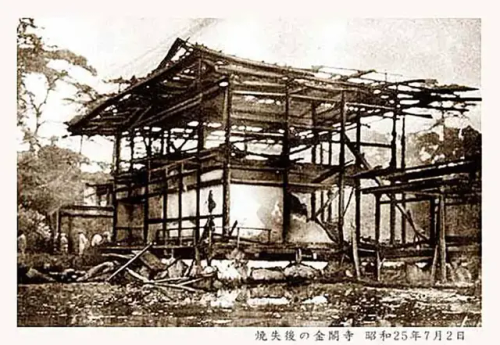
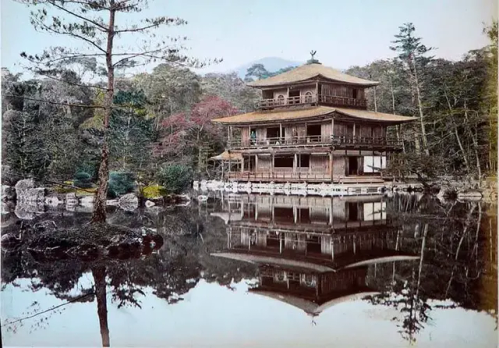



Sean bienvenidos, japonistasarqueologos, a una nueva entrega, cultural-artística vamos a hablar sobre Kinkaku-ji una vez dicho esto pónganse cómodos que empezamos. - El kinkaku-ji se localiza en la ciudad de Kyoto, en la prefectura de Kanto. Kyoto fue una de las dos grandes capitales del Japón feudal porque su otra ciudad de gran peso fue Nara, pero eso es otra historia. - El Kinkaku-ji, fue construido en el siglo XIV, el que se ve actualmente es una reconstrucción porque el original se destruyó en un incendio en 1950 y el actual data de 1980 aproximadamente ya en 1880 perdió su revestimiento de pan de oro, fue La residencia de Ashikaga yoshimitsu tras su muerte lo donó a la orden religiosa y pasó a ser un templo budista. - Espero que os guste y nos vemos en próximas publicaciones. Fuentes de foto: https://blogukiyoe.es/kinkaku-ji-en-el-ukiyo-e wikipedia - Welcome, Japanese archaeologists, to a new cultural-artistic installment, we are going to talk about Kinkaku-ji. Once that has been said, make yourself comfortable and we will begin. - Kinkaku-ji is located in the city of Kyoto, Kanto prefecture. Kyoto was one of the two great capitals of feudal Japan because its other major city was Nara, but that is another story. - The Kinkaku-ji was built in the 14th century, the one currently seen is a reconstruction because the original was destroyed in a fire in 1950 and the current one dates from approximately 1980 and in 1880 it lost its gold leaf coating, it was La residence of Ashikaga Yoshimitsu after his death he donated it to the religious order and it became a Buddhist temple. - I hope you like it and see you in future posts. Photo sources: https://blogukiyoe.es/kinkaku-ji-en-el-ukiyo-e Wikipedia - 日本の考古学者の皆さん、新しい文化芸術の回へようこそ。金閣寺についてお話します。それが終わったら、落ち着いてから始めましょう。 - 金閣寺は、関東県京都市にあります。京都は、もう一つの主要都市が奈良であったため、封建時代の日本の二大首都の一つでしたが、それはまた別の話です。 - 金閣寺は 14 世紀に建てられ、現在見られるものは再建されたものです。オリジナルは 1950 年の火災で焼失し、現在のものは 1980 年頃のもので、1880 年に金箔のコーティングが失われ、ラ邸でした。足利義満の死後、教団に寄進され仏教寺院となった。 - 気に入っていただければ幸いです。今後の投稿でお会いしましょう。 - 写真出典: https://blogukiyoe.es/kinkaku-ji-en-el-ukiyo-e ウィキペディア




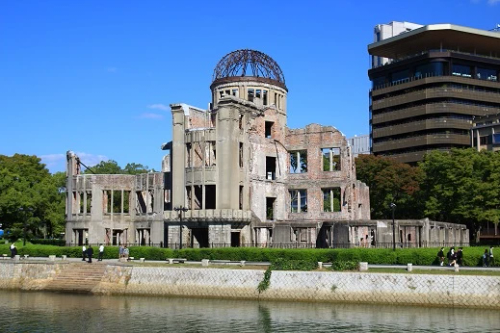
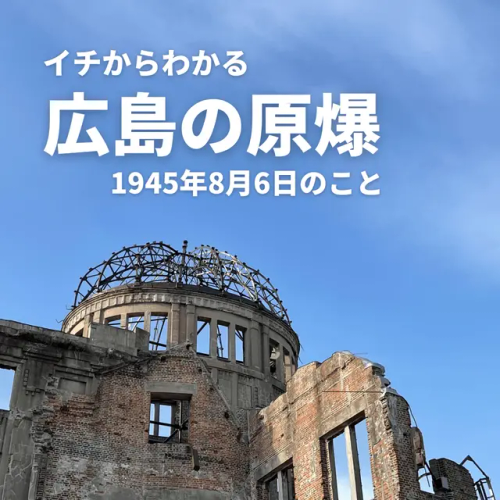

Sean bienvenidos, japonistasarqueologicos a una nueva entrega de historia nipona en la que os pongo imágenes de los epicentros tras los bombardeos del 6 y 9 de agosto, una vez dicho esto pónganse cómodos que empezamos. - Antes que nada me gustaría poner un poco de contexto histórico para poder entender la situación, Japón estaba perdiendo la guerra y estaban buscando formas desesperadas para frenar el avance norteamericano que se cernía sobre el país del sol naciente. Recurrirán a los kamikazes vía aérea y terrestre de hecho se estaba preparando en Japón unas fuerzas de defensa con mujeres, tras la batalla de Okinawa en los 82 días de combate murieron cerca de 100.000 soldados japoneses, más de 12.000 estadounidenses y al menos 100.000 civiles locales, incluidos cientos que fueron obligados a matarse a sí mismo, también se perdería el Yamato en el último kamikaze. - Ciudad de Hiroshima:6 de agosto 1945, Little Boy fue arrojado desde el Enola Gay, matando a más de 70.000 personas al instante y muchas más morirían consecuencia de la radiación. Ciudad de Nagasaki: 9 de agosto 1945, Fat Man, fue la otra bomba atómica lanzada por el mismo avión, causando la muerte de 49.000 personas el día de la explosión. - Conclusión: Los costos fueron terribles, ya que las propias consecuencias lo fueron aún más, espero que no se tengan más bombas atómicas, ni de cualquier otro tipo, el ser humano debería aprender de los errores de la historia para que se acabaran las guerras. Publicación en memoria de todos los que murieron por las bombas atómicas. - Esperó que os haya gustado y nos vemos en próximas publicaciones que pasen una buena semana. - 日本の考古学者の皆さん、ようこそ日本史の新連載へ。8月6日と9日の原爆投下後の爆心地の画像をお届けします。 - まず最初に、この状況を理解するために歴史的背景を説明したいと思う。日本は戦争に負け、日出ずる国に迫りつつあったアメリカの進撃を食い止めるための絶望的な方法を模索していた。沖縄戦の後、82日間の戦闘で10万人近くの日本兵が死に、1万2000人以上のアメリカ兵と、自殺を余儀なくされた数百人を含む少なくとも10万人の民間人が亡くなった。 - 広島市:1945年8月6日、エノラ・ゲイからリトルボーイが投下され、7万人以上が即死。長崎市:1945年8月9日、ファットマンが同じ飛行機から投下され、爆発当日に49,000人が死亡した。 - 結論:原爆投下は、その結果そのものもさることながら、その代償もまた恐ろしいものであった。 私は、原爆や他のいかなる種類の爆弾もこれ以上投下されないことを願うとともに、人類が歴史の過ちから学び、戦争がなくなることを願っている。原爆で亡くなられたすべての方々を悼んで。 - お気に召していただけたなら幸いである。 良い一週間を. - Welcome, Japanese archaeologists, to a new instalment of Japanese history in which I bring you images of the epicentres after the bombings of 6 and 9 August, so make yourselves comfortable and let's get started. - First of all I would like to give some historical context to understand the situation, Japan was losing the war and they were looking for desperate ways to stop the American advance that was looming over the land of the rising sun. They resorted to kamikazes by air and land in fact they were preparing in Japan a defence force with women, after the battle of Okinawa in the 82 days of combat nearly 100,000 Japanese soldiers died, more than 12,000 Americans and at least 100,000 local civilians, including hundreds who were forced to kill themselves, they would also lose the Yamato in the last kamikaze. - Hiroshima City: 6 August 1945, Little Boy was dropped from the Enola Gay, killing over 70,000 people instantly and many more would die from radiation. Nagasaki City: 9 August 1945, Fat Man, was the other atomic bomb dropped from the same plane, killing 49,000 people on the day of the explosion. - Conclusion: The costs were terrible, as the consequences themselves were even more so. I hope that there will be no more atomic bombs, or any other type of bomb, and that mankind should learn from the mistakes of history so that wars will end. Publication in memory of all those who were killed by atomic bombs. - I hope you liked it and see you in future publications. Have a good week.





Sean bienvenidos japonistasarqueológicos, a una nueva entrega de arqueología japonesa, una vez dicho esto pónganse cómodos que empezamos. - Sí, hablamos de la armadura japonesa, se nos viene a la cabeza, la más característica, la de los samurais. ¿Hay alguna armadura más antigua? Sí, datan del periodo kofun o protohistorico, se sabe que en periodos anteriores las tenían de madera por los pocos restos que se han conservado al yayoi, ya que el Jomon fue un periodo de paz y no hay indicios de violencia. - La imagen de estas armaduras la tenemos en las famosas figuras, haniwa hechas de arcilla y utilizadas para los enterramientos, aunque todavía siguen siendo un misterio, estas armaduras estaban manufacturadas de hierro. - Espero que os haya gustado y nos vemos en próximas publicaciones, que pasen una buena semana. - 日本の考古学者たちよ、ようこそ。そう言われたら、くつろいで、さっそく始めましょう。 - そうですね、日本の鎧について話しているのですが、一番特徴的なのは侍の鎧ですね。 - この鎧のイメージは、土で作られ、埋葬に使われた有名な埴輪に見ることができますが、まだ謎が多いのですが、この鎧は鉄で作られていたのですね。 - 気に入っていただけたでしょうか、また今後の記事でお会いしましょう、良い一週間をお過ごしください。 - Welcome, Japanese archaeologists, to a new installment of Japanese archaeology, and once that's been said, make yourselves comfortable and let's get started. - Yes, we are talking about Japanese armour, the most characteristic one comes to mind is that of the samurai, are there any older armour? yes, they date from the Kofun or proto-historic period, we know that in earlier periods they were made of wood because of the few remains that have been preserved in the yayoi, since the Jomon was a period of peace and there is no evidence of violence. - The image of this armour can be seen in the famous haniwa figures, made of clay and used for burials, although they are still a mystery, these armours were made of iron. - I hope you liked it and see you in future posts, have a nice week.

Sean bienvenidosfanaticosarqueológicos a una nueva noticia arqueológica del país del sol naciente ¿Dé que trata dicha noticia? Pues a continuación sin más demora os traigo un supernotición del periodo Asuka(592-710).
-
Se han descubierto unos restos arqueológicos que datan del año 650 hace unos 1300 años de antigüedad en la antigua ciudad de Asuka en la prefectura de Nara, para la próxima publicación hablaremos de las prefecturas, aunque sea un resumen.
-
¿Quién ha encontrado estos restos arqueológicos? Fueron encontrados por el Instituto Arqueológico de Kashihara del que ya hablaremos próximamente. ¿Cuál era el uso de este canal? Serviría para desviar el agua que se desbordaba para llenar el estanque que os dejaré una ilustración del mismo.
-
Las piedras tienen un diámetro de 6 metros, las cuales están pavimentadas. Desde luego una gran obra hidráulica para su época. - Os deseo un feliz día y nos vemos en próximas publicaciones un cordial saludo.
-
考古学ファンの皆様、日出ずる国からの新しい考古学ニュースへようこそ。このニュースは何についてのものですか? さて、早速、飛鳥時代(592年~710年)のスーパーニュースをお届けします。
-
古都奈良県の飛鳥市で約1300年前の650年頃の遺跡が発見されたが、次回はまとめではあるが都道府県の話をしたいと思う。 - 誰がこれらの遺跡を発見したのでしょうか? それらは橿原考古学研究所によって発見されました。これについては後ほど説明します。 このチャンネルの用途は何ですか? これは、溢れ出た水を池に流すのに役立ちます。その図を残しておきます。
-
直径6メートルの石が敷き詰められている。 確かに当時としては素晴らしい水圧作業でした。
-
幸せな一日をお祈りいたします。また今後の出版物でお会いしましょう。心からご挨拶申し上げます。
-


Welcome archaeological fans to a new archaeological news from the country of the rising sun. What is this news about? Well, without further delay, I bring you a super news from the Asuka period (592-710).
-
Archaeological remains dating back to the year 650, about 1,300 years ago, have been discovered in the ancient city of Asuka in Nara Prefecture. For the next publication we will talk about the prefectures, even if it is a summary.
-
Who found these archaeological remains? They were found by the Kashihara Archaeological Institute, which we will talk about soon. What was the use of this channel? It would serve to divert the water that was overflowing to fill the pond, which I will leave you with an illustration of.The stones have a diameter of 6 meters, which are paved. Certainly a great hydraulic work for its time.
-
I wish you a happy day and see you in future publications, cordial greetings.

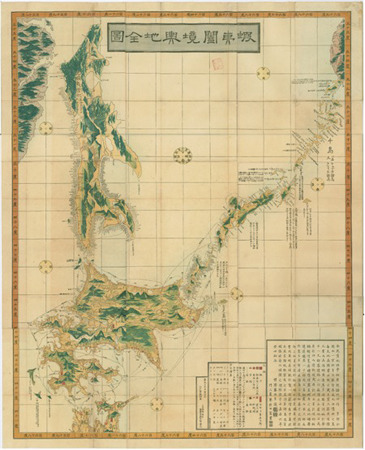


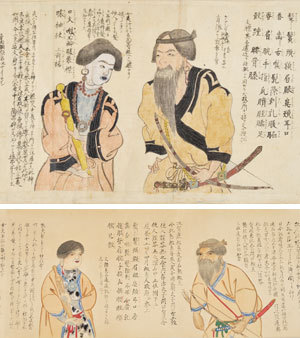
Capítulo 1: Introducción a los Emishi. Sean bienvenidos amantes del mundo japonés a una nueva publicación, en esta ocasión vamos a hablar sobre los emishi dicho esto pónganse cómodos que empezamos. - Para empezar, el término emishi hace referencia a todas las tribus y pueblos que vivían y que todavía viven al norte de Japón es decir la mitad norte de Tohoku, incluida hokkaido a este pueblo se le denominaba y se le denomina todavía a día de hoy Ainu, considerados los primeros pobladores del archipiélago a lo largo del siglo XVI hubo una serie de campañas militares para controlar dicho territorio aunque ya en el siglo VII siglo VIII después de Cristo durante el apogeo del clan yamato crearon una serie de fortalezas al norte para mantenerlos a raya. De hecho eran denominados bárbaros del norte que además se revelarán en más de una ocasión bajo el dominio japonés sin resultado alguno, actualmente se les da un reconocimiento a esta cultura, que en el pasado no lo tuvieron, como por ejemplo hay un museo dedicado a ellos y a su cultura. - Espero que os haya gustado y nos vemos en próximas publicaciones que pasen una buena semana. - 第 1 章: 蝦夷の紹介。 日本世界を愛する皆さん、新しい出版物にようこそ。今回は蝦夷について話します。とはいえ、気を楽にして始めましょう。 - まず、蝦夷という用語は、日本の北、つまり北海道を含む東北の北半分に住んでいた、そして今も住んでいるすべての部族と民族を指し、この民族は現在もアイヌと呼ばれていると考えられています。 16 世紀を通じてこの列島に最初に定住した人々は、その領土を支配するために一連の軍事作戦を行ったが、すでに 7 世紀から 8 世紀にはヤマト氏の全盛期に、彼らは北に一連の要塞を築き、領土を維持していた。湾。実際、彼らは北の野蛮人と呼ばれていましたが、日本の統治下でも何の成果も得られずに何度も姿を現しましたが、現在では、この文化は、例えば、そこでは過去にはなかった認識を与えられています。は彼らとその文化に特化した博物館です。 - 気に入っていただければ幸いです。今後の投稿でお会いしましょう。良い一週間をお過ごしください。 - Chapter 1: Introduction to the Emishi. Welcome lovers of the Japanese world to a new publication, this time we are going to talk about the emishi, that being said, make yourself comfortable and let's get started. - To begin with, the term Emishi refers to all the tribes and peoples who lived and still live in the north of Japan, that is, the northern half of Tohoku, including Hokkaido. This people was called and is still called Ainu today. , considered the first settlers of the archipelago throughout the 16th century there were a series of military campaigns to control said territory although already in the 7th century 8th century AD during the heyday of the Yamato clan they created a series of fortresses to the north to keep them at bay. stripe. In fact, they were called barbarians of the north who also revealed themselves on more than one occasion under Japanese rule without any result. Currently, this culture is given recognition, which in the past they did not have, such as, for example, there is a museum dedicated to them and their culture. - I hope you liked it and see you in future posts, have a good week.

日本の考古学と科学思想の歴史。
第2章 :
日本の考古学者の皆さん、哲学的観点から見た新しい日本考古学へようこそ。 — 前の章で、特定のトピック、歴史、考古学、人類学について質問されるとき、たとえば「私たちの先祖は誰ですか?」とコメントしました。 そして彼らはどうやって X 場所にたどり着いたのでしょうか? 考古学自体が 19 世紀末の 1877 年に登場したとき、1884 年に人類学研究所が、1895 年に日本考古学協会が誕生したことについて触れます。 - 19 世紀の人なら、「私は誰ですか、どこから来たのですか?」と尋ねるでしょう。 ドイツ語、中国語、ノルウェー語、日本語などを尋ねることができます。 この種の質問は今日に至るまで答えられていません。 歴史学と考古学はそれらに答えを与えておらず、今日の他の分野でさえさらに多くのことを知っていますが、道のりはまだ長いです。 19世紀の日本、特にその終わり頃は、自分たちの起源を知りませんでした。 1980 年代の日本の科学者なら誰でも、最初の日本人入植者は誰だったのか疑問に思うでしょう。 ここに定住するきっかけは何ですか? 現在、最初の入植者は約 3 万年前に到着したことが知られていますが、彼らだけだったのでしょうか? この諸島には、海面が現在より 120 倍も低かったため、中国と朝鮮の半島を北と南から通ってやって来た最初の入植者がいたことが知られています。 日本人は非常に古い本を 2 冊持っていることが知られており、1 冊は西暦 711 年、もう 1 冊は西暦 722 年のものです。 最初の書紀は古事記と呼ばれ、二番目の日本書紀は、神 (カミスと呼ばれる) による西暦 660 年からの日本の建国について語っています。この日本の神聖な起源の概念は、第二次世界大戦 (第二次世界大戦) まで続きます。 これら 2 冊の本は、ヨーロッパではギリシャとローマに遡る最古の本に相当します。 - 気に入っていただければ幸いです。今後の投稿でお会いしましょう。良い一週間をお過ごしください。
HISTORY OF JAPANESE ARCHEOLOGY AND SCIENTIFIC THOUGHT.
Episode 2:
Welcome, Japanesearchaeologicalists, to a new installment of Japanese archaeology, seen from a philosophical point of view. Having said that, get comfortable and let's begin.
—
In the previous chapter, we commented that when we are asked questions about certain topics, history, archeology and anthropology, for example: Who were our ancestors? And how did they get to X place? We mention, when archeology itself emerged at the end of the 19th century, 1877, the origin of the anthropology laboratory in 1884 and in 1895 the Japanese archeology society.
-
A person from the 19th century would ask: Who am I, where do I come from? We could ask a: German, Chinese, Norwegian, Japanese, etc. These types of questions remain unanswered to this day. History and archeology have not given them an answer, even other disciplines today know much more, but there is still a long way to go. Japan during the 19th century, especially the end of that period, did not know its own origin. Any Japanese scientist in the 1980s would wonder who were the first Japanese settlers? What led you to settle here? Currently, it is known that the first settlers arrived about 30,000 years ago. Were they the only ones? It is known that the archipelago was inhabited by other inhabitants who were the first settlers. They arrived through the peninsula of China and Korea, both from the north and the south, since the sea level was 120 times lower than today. It is known that the Japanese have two very old books, one dates from 711 and the other from 722 AD. The first is called Kojiki and the second Nihonshoki, the Kojiki tells of the founding of Japan from the year 660 AD by the gods (called kamis), this concept of the divine origin of Japan would last until World War II (2ww). These two books would be the equivalent in Europe of the oldest dating back to Greece and Rome.
-
I hope you liked it and see you in future posts, have a good week.




Sean bienvenidos mis queridos fanáticosarqueológicos a una nueva entrega de prehistoria Japónesa en esta ocasión nos trasladamos a la pregunta ¿Cuándo se originó el sintoísmo?. - Aunque parezca raro es una religión que se conformo durante el periódo Jōmon (17.500-300), para ser exactos a finales de dicho período y continua hasta nuestros días los dioses del sintoísmo, se les llama Kamis ( dios) ya que para los japoneses todo tenía un dios las montañas, ríos. - El sintoísmo tiene influencias chinas, coreanas de hay que tenga similitudes con el taoísmo, ¿Qué dos libros recogen la categoría de los Kamis? Son el Kojiki(713d.c) y el Nihonshoki(720d.c). - Espero que os guste y nos vemos en una próxima públicacion un cordial saludo. 🇯🇵 私の愛する考古学ファンを日本の先史時代の新作に歓迎します。今回は、神道がいつ始まったのかという質問に移ります。 - 奇妙に思えるかもしれませんが、縄文時代(17500-300)に形成された宗教であり、正確にはその時代の終わりに、今日まで神道の神であり、カミス(神)と呼ばれています。 日本人にとって、山や川にはすべて神がいました。 - 神道は中国、韓国の影響を受けており、道教との類似点があります。 カミスのカテゴリーに分類される2冊の本は何ですか? こうじき(713d.c)と日本書紀(720d.c)です。 - よろしくお願いします。次の出版物で心からのご挨拶を申し上げます。 🇬🇧 Welcome my dear archaeological fans to a new installment of Japanese prehistory, this time we move to the question, when did Shintoism originate? - Although it may seem strange, it is a religion that was formed during the Jōmon period (17500-300), to be exact at the end of that period and continues to this day the gods of Shintoism, they are called Kamis (god) since for the Japanese everything the mountains and rivers had a god. - Shintoism has Chinese, Korean influences, and there are similarities with Taoism. What two books are classified under the category of the Kamis? They are the Kojiki (713d.c) and the Nihonshoki (720d.c). - I hope you like it and see you in a next publication a cordial greeting.



Sean bienvenidos japonistasarqueológicos a una nueva entrega en esta ocasión os hago una introducción a la serie de Japón y su arqueología para él Jōmon ya os la iré subiendo de cada periodo prehistórico. - ¿En cuántas partes se divide el periodo Jōmon? Su estructura se clasifica en 6 partes: 1 Edad temprana. 2 Temprano. 3 Periodo temprano (4000-300 a.c) 4 Medio temprano ( 3000-2000 a.c) 5 Tardío (2000-1000 a.c) 6 Período Tardío(1000-300 d.c) - Espero que os haya gustado y nos vemos en próximas publicaciones. - Welcome japonistasarqueológicos to a new installment. This time I'll introduce you to the series of Japan and its archaeology for the Jōmon, and I'll upload it for each prehistoric period. - How many parts is the Jōmon period divided into? Its structure is classified into 6 parts: 1 Early Age. 2 Early. 3 Early Period (4000-300 BC) 4 Early Middle (3000-2000 BC) 5 Late (2000-1000 BC) 6 Late Period (1000-300 AD) - I hope you liked it and see you in future posts. - 日本考古学の専門家へようこそ。今回は縄文に関する日本とその考古学のシリーズを先史時代ごとにアップロードします。 - 縄文時代はいくつに分かれていますか?その構造は次の 6 つの部分に分類されます。 1 幼少期。 2 早い。 3 初期 (紀元前 4000 ~ 300 年) 4 中期初期(紀元前 3000 ~ 2000 年) 5 後期 (紀元前 2000 ~ 1000 年) 6 後期 (西暦 1000 ~ 300 年) - 気に入っていただければ幸いです。今後の投稿でお会いしましょう。





ようこそ、日本の考古学者、日本の考古学の新しい章へ。今度は別の古墳を紹介します。そうは言っても、快適に始めましょう。 - この古墳はハリズカと呼ばれ、松本市里山辺にあり、田んぼや果樹園に囲まれています。 - 5世紀半ばにさかのぼり、直径は幅20 m、高さ2mです。 誰が埋葬されたのですか?私はあなたに任せます。 - 良い一日と良い週をお祈りします。考古学と日本の歴史の今後の出版物でお会いしましょう。 - Welcome, Japanese archaeologists, to a new chapter of Japanese archaeology, this time I present to you another burial mound, having said that, make yourself comfortable, let's begin. - This burial mound is called Harizuka, and it is located in Satoyamabe in the city of Matsumoto, it is surrounded by rice paddies and orchards. - It dates from the middle of the 5th century and its diameter is 20 m wide and 2 m high. Who was buried? I leave it to you. - I wish you a good day and a good week, see you in future publications of archeology and Japanese history.
-
Bienvenidos arqueólogos japoneses a un nuevo capítulo de la arqueología japonesa, en esta ocasión les presento otro túmulo, dicho esto, pónganse cómodos, comencemos.
-
Este túmulo se llama Harizuka, y está ubicado en Satoyamabe en la ciudad de Matsumoto, está rodeado de arrozales y huertos.
-
Data de mediados del siglo V y su diámetro es de 20 m de ancho y 2 m de alto. ¿Quién fue enterrado? ¿Te lo dejo?
-
Les deseo un buen día y una buena semana, nos vemos en futuras publicaciones de arqueología e historia japonesa.

Sean bienvenidos japonesasarqueológicos a una nueva entrega arqueológica, en esta ocasión hablaremos de la primera moneda japonesa atrás vez de los restos Arqueológicos y de evidencias históricas dicho esto pónganse cómodos que empezamos. - ¿Cuándo surge la moneda en Japón? La primera moneda, oficialmente nace en el año 708 d.c llamada Wadokaichin, mientras tanto que en otros continentes del mundo como china o en el próximo oriente ya se habían creado la moneda y los primeros sistemas monetarios. ¿Qué había antes del 708 d.c? Pues había dos protomonedas una en el año 660 d.c. otra en el año 683, habían tomado como modelo la moneda china de 621 d.c - ¿Cómo se llamaban las dos monedas anteriores al siglo VIII d.c? Fuhonsen data del año 683 d.c y fue descubierta en 1998 Mumonginsen datada del año 660 d.c - La moneda Mumonginsen coincide con la leyenda de la fundación del estado japonés por el primer emperador Jinmu Tennō, según la historiografía moderna lo consideran un personaje ficticio hay que tener en cuenta que toda leyenda tiene una base real. - ¿Qué emperadores podemos encontrar en esta cronología según la historiografía y los restos arqueológicos? Los emperadores eran Tenji y Tenmu tennō. ¿Dónde fueron encontradas dichas monedas? fueron halladas en las ruinas de Asukaile en la prefectura de Nara en el pueblo de Asuka. - ¿Conocían estas monedas?¿Qué opinan ustedes al respecto? Espero que os haya gustado y nos vemos en la próxima publicación de arqueología nipona. - 日本の考古学者は新しい考古学の記事を歓迎します。今回は、考古学的遺跡や歴史的証拠の代わりに、最初の日本のコインについて話します。 - 日本ではいつ通貨が出現しますか?最初の通貨は、和同開珀と呼ばれる西暦708年に正式に誕生しましたが、中国や中東などの世界の他の大陸では、通貨と最初の通貨制度がすでに作成されていました。西暦708年以前は何がありましたか?ええと、2つのプロトコインがありました。1つは西暦660年にありました。別の683年に、彼らは621ADの中国の硬貨をモデルとして採用しました。 .- 8世紀以前の2枚の硬貨は何と呼ばれていましたか? 富本銭は西暦683年にさかのぼり、1998年に発見されました。 西暦660年のムモンギンセン ムモンギンセンの硬貨は、初代神武天皇による日本国家の建国の伝説と一致しており、現代の歴史学によれば、彼は架空の人物であると考えられており、すべての伝説には本当の根拠があることを考慮に入れる必要があります。 - 歴史学と考古学的遺跡によると、この年代学でどの皇帝を見つけることができますか?天武天皇は天武天皇と天武天皇でした。これらのコインはどこで見つかりましたか?奈良県のあすか町のあすかいれ廃墟で発見されました。 - これらのコインを知っていましたか?それについてどう思いますか?あなたがそれを気に入って、次の日本の考古学の出版物であなたに会えることを願っています。 - Japanese archaeologists are welcome to a new archaeological installment, this time we will talk about the first Japanese coin back instead of the Archaeological remains and historical evidence, having said that, make yourself comfortable, we begin. - When does currency emerge in Japan? The first currency was officially born in the year 708 AD called Wadokaichin, meanwhile in other continents of the world such as China or the Middle East the currency and the first monetary systems had already been created. What was there before 708 AD? Well, there were two proto-coins, one in the year 660 AD. another in the year 683, they had taken as a model the Chinese coin of 621 AD .- What were the two coins before the 8th century AD called? Fuhonsen dates back to 683 AD and was discovered in 1998. Mumonginsen dated to 660 AD The Mumonginsen coin coincides with the legend of the foundation of the Japanese state by the first emperor Jinmu Tennō, according to modern historiography they consider him a fictitious character, it must be taken into account that all legends have a real basis. - Which emperors can we find in this chronology according to historiography and archaeological remains? The emperors were Tenji and Tenmu tennō. Where were these coins found? They were found in the Asukaile Ruins in Nara Prefecture in the town of Asuka. - Did you know these coins? What do you think about it? I hope you liked it and see you in the next Japanese archeology publication.
-
 repera23 liked this · 10 months ago
repera23 liked this · 10 months ago -
 bear-pattern-hamster liked this · 10 months ago
bear-pattern-hamster liked this · 10 months ago -
 adam-trademark liked this · 10 months ago
adam-trademark liked this · 10 months ago -
 noticiasarquelogicasjaponesas reblogged this · 10 months ago
noticiasarquelogicasjaponesas reblogged this · 10 months ago -
 margocooper liked this · 1 year ago
margocooper liked this · 1 year ago -
 el-zorro-chile liked this · 1 year ago
el-zorro-chile liked this · 1 year ago -
 hidewaku liked this · 1 year ago
hidewaku liked this · 1 year ago -
 catdoll007 liked this · 1 year ago
catdoll007 liked this · 1 year ago -
 conversationswithamillennial reblogged this · 1 year ago
conversationswithamillennial reblogged this · 1 year ago -
 lollyase reblogged this · 1 year ago
lollyase reblogged this · 1 year ago -
 u-nobu liked this · 1 year ago
u-nobu liked this · 1 year ago -
 rodolfo9999 liked this · 1 year ago
rodolfo9999 liked this · 1 year ago -
 ted-blogs-blog liked this · 1 year ago
ted-blogs-blog liked this · 1 year ago -
 asiaphotostudio liked this · 1 year ago
asiaphotostudio liked this · 1 year ago -
 burubonk liked this · 1 year ago
burubonk liked this · 1 year ago -
 michitakao liked this · 1 year ago
michitakao liked this · 1 year ago -
 hiromusicarts-blog liked this · 1 year ago
hiromusicarts-blog liked this · 1 year ago -
 noticiasarquelogicasjaponesas reblogged this · 1 year ago
noticiasarquelogicasjaponesas reblogged this · 1 year ago

238 posts